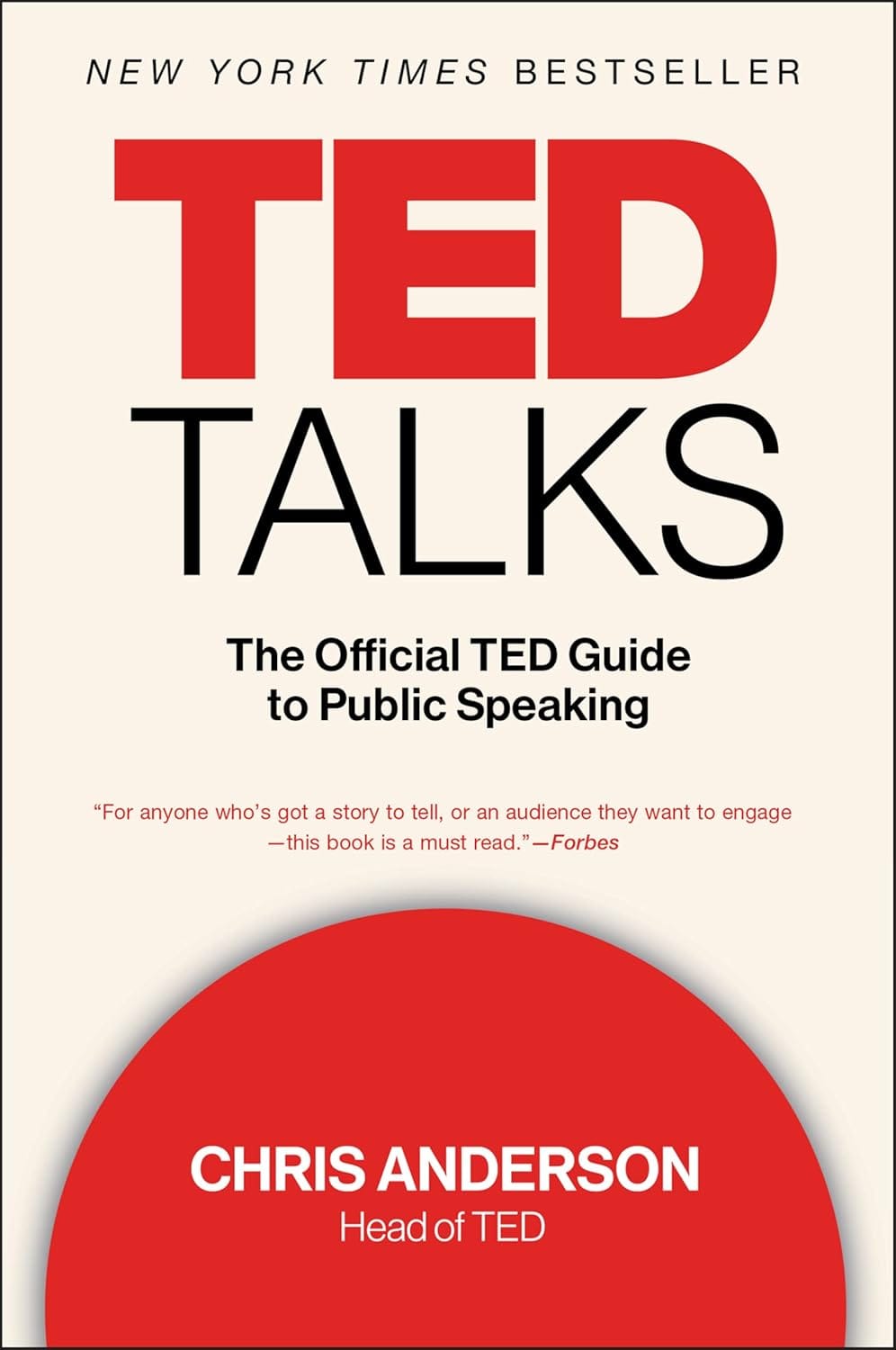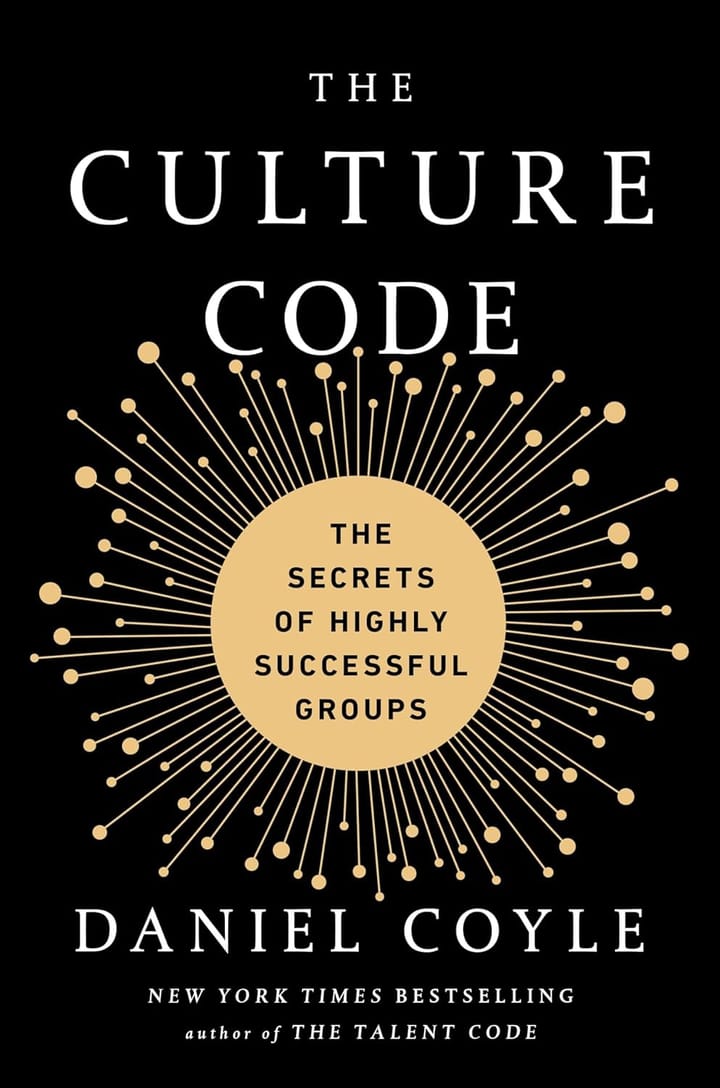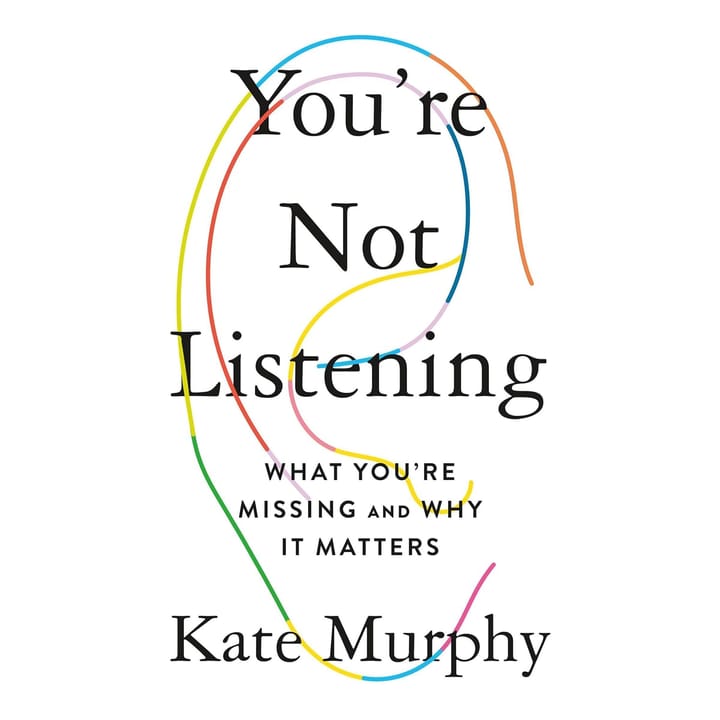Book Summary: TED Talks: The Official TED Guide to Public Speaking
Learn how to master the art of public speaking with insights from TED Talks in this comprehensive guide by Chris Anderson.

Essential Insights
- Understanding the importance of storytelling and authenticity in public speaking.
- Learning how to effectively structure a TED talk for maximum impact.
- Gaining insight into the strategies and techniques used by successful TED speakers.
Introduction to TED Talks: The Official TED Guide to Public Speaking
Chris Anderson, author of TED Talks, showcases his expertise in the realm of public speaking through the book TED Talks: The Official TED Guide to Public Speaking. In this comprehensive guide, Anderson not only draws from his vast experience in curating impactful talks but also shares insights from some of the most influential speakers in the world. Through this book, readers gain valuable knowledge on the art of public speaking, making it a must-read for anyone looking to enhance their communication skills and captivate audiences.
For individuals seeking to elevate their leadership and personal development skills, TED Talks: The Official TED Guide to Public Speaking offers a treasure trove of practical advice and strategies. By delving into the principles of effective communication and storytelling, readers can learn how to craft compelling narratives that resonate with listeners. This book not only empowers individuals to deliver engaging presentations but also instills the confidence needed to inspire and influence others, making it an indispensable resource for aspiring leaders and speakers alike.
Buy "TED Talks: The Official TED Guide to Public Speaking" on Amazon
Summary of TED Talks: The Official TED Guide to Public Speaking
TED Talks: The Official TED Guide to Public Speaking emphasizes the essential elements of effective communication, particularly in public speaking. Chris Anderson, who leads TED, outlines how sharing ideas can ignite change and inspire action. The book centers on the importance of storytelling, authenticity, and engaging the audience, providing practical advice for speakers aiming to convey their messages clearly and powerfully. By focusing on the human connection, the art of captivating presentations is explored, revealing how passion and preparation can elevate any talk.
One unique contribution of the book is its insider perspective from TED’s extensive experience in curating talks that resonate globally. Anderson shares various approaches to crafting a speech, drawing from successful examples by renowned speakers and highlighting the techniques that make their presentations stand out. This behind-the-scenes look into the world of TED provides readers with valuable lessons, bridging the gap between theory and practical application. The emphasis on emotional engagement and authenticity sets this guide apart, offering a refreshing take on what it means to connect with an audience.
Notable ideas presented in the book include the significance of understanding your audience and tailoring your message to resonate with them. Anderson stresses that speakers should prioritize clarity and engagement over mere information delivery, encouraging individuals to share personal anecdotes and insights effectively. By focusing on the power of ideas and emotional connection, the book sets a solid foundation for aspiring leaders and communicators. The principles laid out serve as a guide for anyone looking to enhance their public speaking skills, inspiring a journey toward more impactful conversations.
Key Lessons From TED Talks: The Official TED Guide to Public Speaking
Understanding Your Audience
One of the primary lessons from TED Talks: The Official TED Guide to Public Speaking is the importance of knowing your audience. Chris Anderson emphasizes that effective communication hinges on understanding who your listeners are and what they care about. By tailoring your message to meet their expectations and preferences, you can create a compelling connection that resonates deeply.
For example, Anderson shares stories from various TED speakers who have successfully engaged their audiences by incorporating relatable anecdotes or addressing challenges that the listeners face. These instances illustrate how speakers can adjust their approach based on the audience, leading to a more impactful presentation. Understanding the audience transforms a talk from a mere presentation into a shared experience.
This lesson is significant because it underscores the responsibility of the speaker to connect meaningfully with their audience. By making this connection, speakers can inspire action, foster change, and spark innovative thoughts. Readers are encouraged to see their presentations through the eyes of their audience, enabling them to craft messages that truly resonate.
Telling a Compelling Story
Another key takeaway from the book is the power of storytelling in public speaking. Anderson advocates for using stories to convey messages effectively, emphasizing that narratives can make complex ideas more relatable and memorable. The emotional appeal of a well-told story helps to engage the audience and leaves a lasting impression.
The ability to tell a compelling story is vital for anyone looking to persuade or motivate others. Readers of the book are encouraged to embrace their own narratives, allowing their unique experiences to shape their presentations. This approach can foster growth and creativity, empowering individuals to present their ideas in ways that resonate profoundly with others.
Mastering the Art of Simplicity
Anderson highlights the significance of simplicity in conveying ideas effectively. He argues that complex concepts should be distilled down to their essence, allowing for clarity and ease of understanding. By avoiding jargon and overly complicated explanations, speakers can ensure their message is accessible to all audience members.
The book provides strategies for simplifying messages, such as breaking down information into digestible parts or using visuals to complement spoken words. For example, a speaker discussing advanced technology might use straightforward analogies that relate to everyday experiences, making the content more approachable. This technique not only aids comprehension but also enhances retention.
Simplicity can be a powerful tool in a speaker's arsenal. By adopting this approach, readers can elevate their communication skills and make intricate topics approachable. The lesson inspires individuals to reconsider their own communication methods, fostering clarity in both personal and professional interactions, leading to enhanced collaboration and understanding.
Practicing for Success
Anderson emphasizes that practice is a critical component of successful public speaking. He urges readers to rehearse their presentations multiple times, not just to memorize content, but to gain comfort and confidence in delivery. This preparation helps speakers refine their messages, anticipate audience reactions, and adjust on the fly as needed.
The importance of practice is exemplified through anecdotes from TED speakers who underwent extensive preparation before taking the stage. These experiences reveal that even seasoned speakers benefit from thorough rehearsal, as it can improve pacing, intonation, and overall engagement. Readers are encouraged to view practice as a pathway to refinement rather than a requisite chore.
Incorporating dedicated practice can result in significant improvements in a speaker's performance. This lesson motivates readers to take their delivery seriously, understanding that preparation can lead to mastery. By embracing this principle, individuals in varied fields can present with confidence, enhancing their ability to communicate effectively in every aspect of their lives.
Creating a Memorable Conclusion
Finally, Anderson discusses the importance of ending a talk with a memorable conclusion. He argues that a strong finish can reinforce key messages and leave a lasting impression on the audience. By summarizing main points and providing a call to action, speakers can inspire their listeners to reflect on what they’ve heard.
In the book, Anderson shares effective techniques for crafting a compelling conclusion, such as incorporating a powerful quote, an emotive story, or a thought-provoking question. These elements can provoke deeper thought and encourage the audience to take the message beyond the presentation itself. This approach underscores the significance of every part of a talk and how it contributes to overall impact.
This lesson holds the potential to reshape how speakers approach conclusions, encouraging them to craft endings that resonate. By focusing on creating memorable conclusions, readers can elevate their presentations, making their ideas stand out and inviting others to engage with their messages long after the talk has ended. This shift can lead to greater influence and engagement in various personal and professional endeavors.
Application Ideas for TED Talks: The Official TED Guide to Public Speaking
Understanding Your Audience
One of the key lessons from TED Talks: The Official TED Guide to Public Speaking is the importance of knowing your audience. To effectively engage listeners, begin by identifying who they are and what interests them. This involves gathering insights about their backgrounds, beliefs, and what they may already know about the subject. An actionable step for readers is to create a simple audience profile by jotting down key demographics and psychographics, helping to shape the message of any presentation or talk.
Implementing this step in daily life can manifest in various settings, such as preparing for a meeting, a public speech, or even a team presentation. By tailoring content to the audience's preferences, you not only foster better connections but also enhance the receptivity of your message. Furthermore, consider sharing anecdotes or relatable stories to bridge the gap between your viewpoint and their experiences. To facilitate this process, seek feedback from colleagues or friends who fit the audience profile before finalizing your presentation.
An additional aspect to explore is how varied communication methods can cater to different audience segments. For instance, using visuals might resonate better with certain groups while others may prefer a narrative approach. A good example comes from a project manager who transformed her work presentations by integrating simple graphics and interactive elements based on team feedback, resulting in improved engagement and understanding across her department.
Cultivating a Clear Message
Another essential lesson from the book is the emphasis on clarity in messaging. Establishing a clear central idea serves as the backbone of any effective talk. To embody this lesson, identify the main message you wish to convey and ensure that all supporting points reinforce this idea. Create a one-sentence summary that encapsulates your core message. This exercise helps keep your presentation focused and allows you to communicate effectively and succinctly.
This practice proves practical in various leadership roles, whether you're delivering updates at a team meeting, preparing a proposal, or addressing a larger audience. When you remain tethered to your main message, the audience can more easily follow your thoughts and retain key information. Additionally, incorporating a concluding statement that reinforces this message can leave a lasting impression. Simplifying your slides to feature central ideas rather than blocks of text also aids retention.
A real-world scenario can highlight the effectiveness of this approach. Consider a nonprofit organization seeking to raise funds through a pitch. By centering their presentation around the single message of “Transforming Lives,” they crafted a compelling narrative with a clear beginning, middle, and end. Feedback indicated that the audience had a much clearer understanding of the organization’s mission, resulting in a successful fundraising outcome.
Mastering Delivery Techniques
The book accentuates the significance of delivery techniques, which can enhance audience engagement. A foundational step is to practice varying your tone, pace, and volume to maintain listener interest. Record practice sessions or rehearse in front of a mirror to observe and adjust your delivery methods. This exercise enables you to become aware of your body language and vocal dynamics, which are crucial in reinforcing your message.
Incorporating these techniques into everyday communications can be beneficial, whether giving feedback to a colleague or leading a presentation. By consciously adjusting your speaking style, you’ll find that you can command attention more effectively. Aim to use pauses for emphasis, as they provide listeners time to absorb information. Additionally, building eye contact with your audience creates a sense of connection that enhances engagement.
An illustration of the impact of delivery techniques can be seen in a teacher's approach during lectures. By incorporating varied voice modulation and passionate storytelling, students reported a higher level of motivation and interest. This not only improved classroom engagement but also contributed to better retention of the material being taught, demonstrating that delivery is as essential as content.
Embracing Feedback for Continuous Improvement
Finally, one critical takeaway from the book is the role of feedback in refining public speaking abilities. Adopt an ongoing practice of seeking constructive criticism after every presentation or speaking engagement. This could involve asking for input from peers, mentors, or even the audience through formal surveys. Understanding how your message resonates and where it can be improved is invaluable for growth.
Implementing this practice can significantly influence your leadership development. Whether you’re leading a team meeting, presenting a business strategy, or speaking publicly, actively seeking feedback encourages a culture of openness and adaptability. Furthermore, utilizing the feedback to adjust future presentations demonstrates a commitment to continuous self-improvement and responsiveness to audience needs.
A practical scenario to consider is that of a sales manager who routinely asks for feedback after team pitches. By adjusting based on this feedback and implementing suggestions for future interactions, he not only enhances his presentations but also fosters a team environment where everyone feels valued and encourages collaboration. This responsive approach can create a more innovative and productive workplace culture.
Concluding Thoughts
The article highlights the essential teachings from TED Talks: The Official TED Guide to Public Speaking by Chris Anderson. Through an exploration of key elements such as understanding your audience, the importance of storytelling, clarity in messaging, delivery techniques, and the role of feedback, it becomes evident that effective public speaking is rooted in human connection and authenticity. Anderson emphasizes that knowing your audience allows speakers to tailor their messages for maximum resonance, while storytelling serves as a powerful tool to engage listeners emotionally. Furthermore, clarity is crucial when conveying complex ideas, ensuring that the audience can easily grasp and retain the information presented.
Mastering delivery techniques, from varying tone and pace to maintaining eye contact, enhances the connection between speaker and audience, making the message more impactful. Additionally, incorporating feedback fosters continuous improvement, allowing speakers to refine their skills and adapt to their audience's needs. The book’s insights are not just theoretical; they provide practical steps that readers can implement in their own public speaking endeavors. Anderson’s extensive experience with TED talks adds valuable credibility to the guidance offered, making it an essential resource for anyone looking to improve their communication skills and create more compelling presentations. As you reflect on the lessons detailed in this article, consider how you can integrate these principles into your life.
Whether preparing for a work presentation, a community speech, or even a casual conversation, the techniques outlined can enhance your effectiveness as a communicator. Embrace the art of public speaking and let your voice be a catalyst for change. Begin your journey today by picking up the book and applying these insights to inspire and engage those around you.
Related Topics
- Public Speaking Skills - Techniques and strategies for effectively delivering speeches and presentations to an audience.
- Effective Communication - How to convey ideas clearly and persuasively to others in various contexts.
- Storytelling - The art of crafting narratives to engage and inspire listeners, an important aspect of public speaking.
- Leadership Development - How effective public speaking can enhance leadership abilities and influence others.
- Overcoming Stage Fright - Strategies for managing anxiety and nerves when speaking in public.
Reflection & Discussion Questions
Reflection is a powerful tool for personal growth and leadership development. Whether you're exploring your own experiences or engaging in thoughtful group discussion or team training, reflection questions help uncover new insights, clarify values, and inspire meaningful action. Below are questions designed to deepen your understanding of the concepts taught in TED Talks: The Official TED Guide to Public Speaking, and facilitate constructive conversations with your team or group.
- How can you tailor your message to better resonate with your audience's preferences and interests?
- What key takeaway about storytelling can you apply to make your presentations more engaging and memorable?
- How can you simplify complex concepts in your presentations to ensure clarity and understanding?
- In what ways can you practice and refine your public speaking skills to gain confidence and mastery?
- What strategies can you use to craft a memorable conclusion that reinforces your main message and inspires action?
- How can understanding your audience help you create a more impactful and relatable presentation?
- How can you ensure that your main message remains clear and focused throughout your presentation to enhance audience understanding?
- What delivery techniques can you practice to improve audience engagement and retention of your message?
- How can you incorporate feedback from peers or mentors to continuously improve your public speaking abilities?
- What steps can you take to create a more compelling and relatable presentation through personal anecdotes and stories?
- How can you adjust your communication methods to cater to different audience segments and enhance engagement?
- What techniques can you use to maintain listener interest through varying your tone, pace, and volume during a presentation?
- How can you utilize feedback from previous speaking engagements to adjust and enhance your future presentations?
- What impact can practicing simplicity in your message delivery have on fostering clarity and understanding among your audience?
- How can you draw inspiration from successful TED speakers to elevate your own public speaking skills and presentations?
Recommended Reading
Below are a few recommended books related to concepts taught in TED Talks: The Official TED Guide to Public Speaking.
- Talk Like TED: The 9 Public-Speaking Secrets of the World's Top Minds by Carmine Gallo. Offers tips and techniques on how to deliver powerful presentations inspired by TED talks.
- The Art of Communicating by Thich Nhat Hanh. Focuses on the importance of effective communication in building relationships and fostering understanding.
- TED Talks Storytelling: 23 Storytelling Techniques from the Best TED Talks by Akash Karia. Provides insights into how to craft engaging narratives and deliver impactful messages through storytelling.
Frequently Asked Questions
What is the main goal of a TED talk?
TED talks are all about spreading ideas and sparking meaningful conversations. Whether it's sharing a personal story, introducing a groundbreaking concept, or advocating for a cause, the ultimate goal of a TED talk is to inspire, educate, and engage the audience in a way that leaves a lasting impact. TED speakers aim to deliver their message in a clear, compelling, and memorable way that resonates with the listeners long after the talk has ended.
What kind of speaking style works best in a TED Talk?
In a TED Talk, the most effective speaking style is authentic and conversational. It's important to be yourself and connect with the audience on a personal level through storytelling and connecting with your emotions. Avoid using overly formal language or rehearsed speeches; instead, speak with passion and sincerity. Remember to keep the tone engaging and relatable, as if you were simply chatting with a friend. This approach helps create a genuine connection with the audience and keeps them engaged throughout your talk.
Can I deliver a talk in a language other than English?
Yes, TED Talks are delivered in over 100 languages, so you can definitely give your talk in a language other than English. However, if you deliver your talk in a language other than English, it is important to provide subtitles in English so that a broader audience can understand and appreciate your message. Having English subtitles will help your talk reach a larger audience and potentially have a greater impact.
What are some common mistakes people make when delivering a TED Talk?
People often make the mistake of not connecting with their audience on a personal level. Remember that your goal is to share your ideas in a way that resonates with the audience, so make sure to tell stories, use humor, and maintain eye contact to keep them engaged. Another common mistake is being unprepared, which can lead to stumbling through your talk or going over your allotted time. Practice your talk multiple times beforehand to ensure smooth delivery. Lastly, watch out for using jargon or overly complex language that may alienate your audience. Keep your talk simple, clear, and relatable to make the biggest impact.
Buy "TED Talks: The Official TED Guide to Public Speaking" on Amazon
Affiliate Disclaimer
Some of the links on this website may be affiliate links. This means that, at no additional cost to you, we may earn a commission if you click through and make a purchase. Your support through these affiliate links helps sustain and improve the quality of the content we provide.



